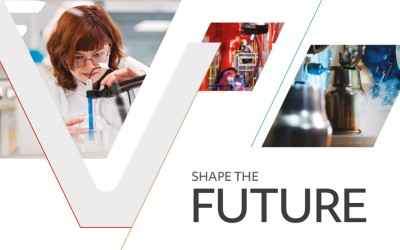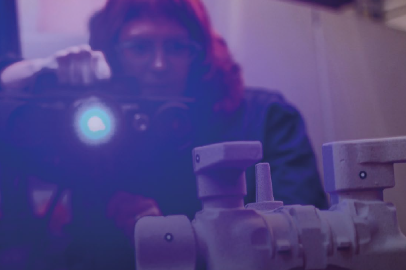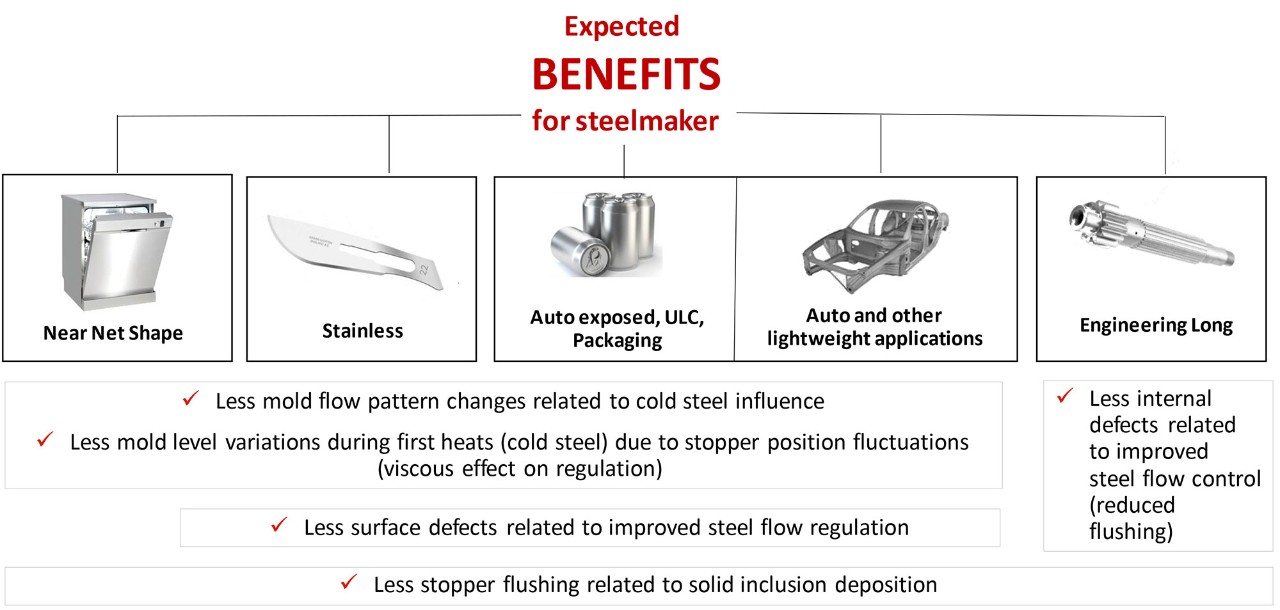
Benefits for both types of tundish flow control
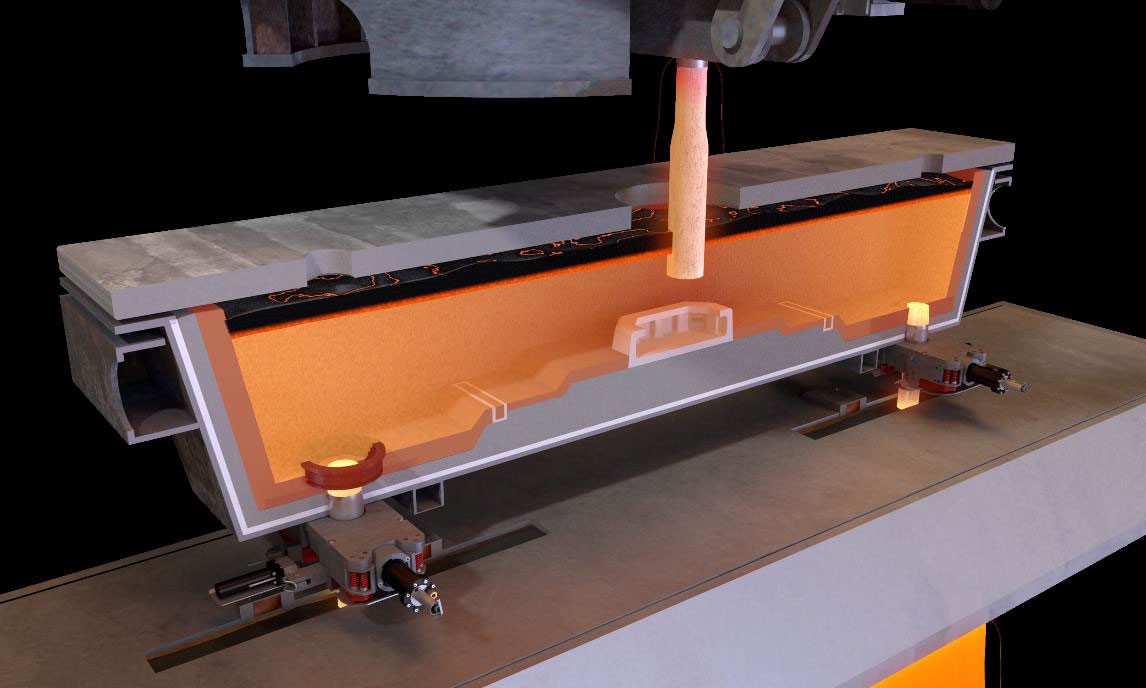
Tundish Slide Gate control
- Clogging reduction in the tundish to mold flow channel
- Provides a homogeneous temperature to the mold enhancing mold flow and meniscus stability
- Physical barrier blocking NMI oxides from entering the flow channel
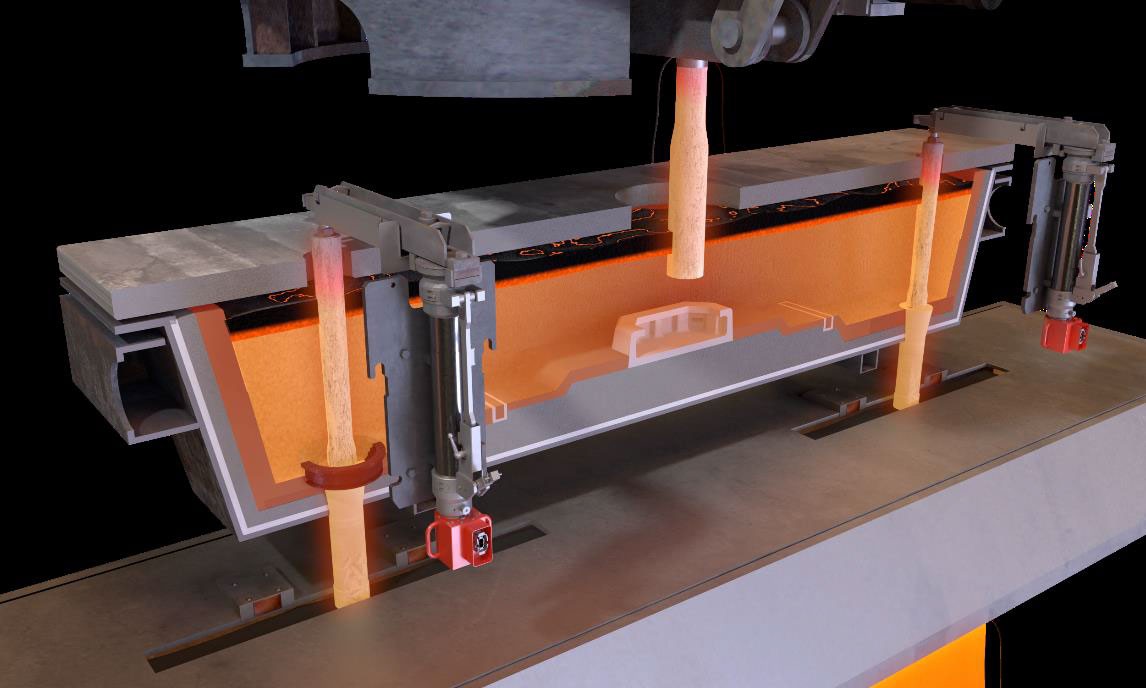
Tundish Stopper control
- Stabilizes flow control e.g. standard deviation of rod position, mold level fluctuation, reduces wash-out events
- Cold Tundish (without preheating)
Design
INTERNAL STEPS
- Generate turbulence to minimize cold/dead zones around the outlet
- Turbulence destabilizes vortexing during low level events in the tundish
- Maximize surface for collection of non-metallic inclusions on the ATOM
- instead of in the flow channel below
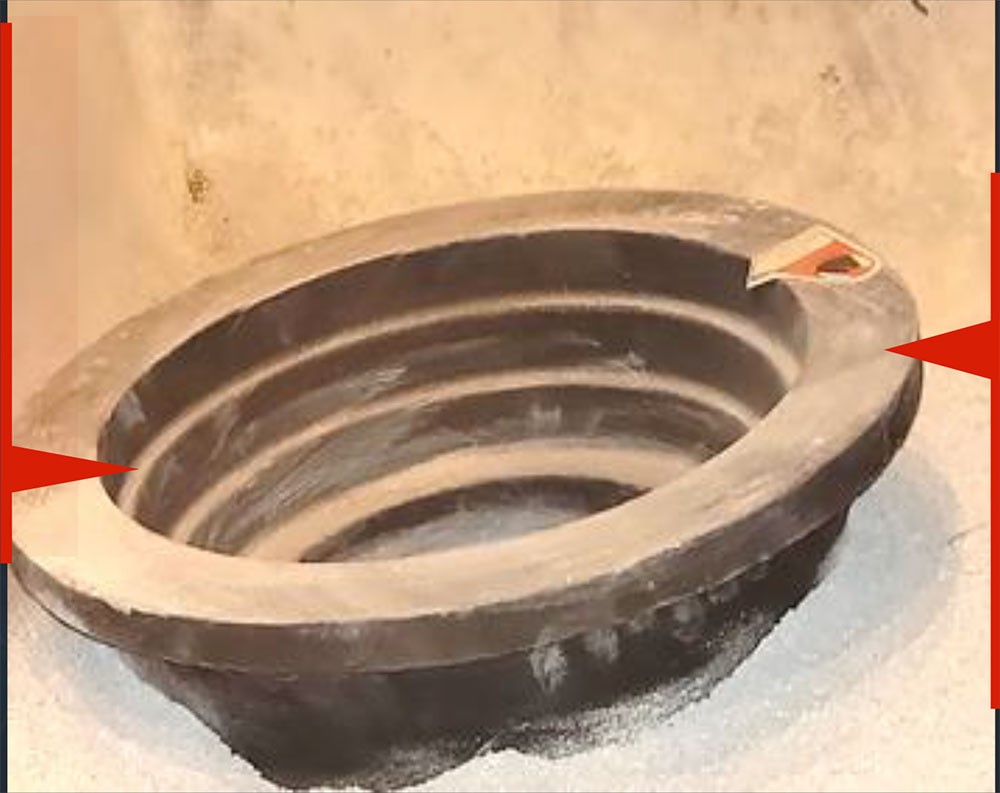
EXTERNAL LIP
- Prevents entrainment of the reoxidized steel layer along the floor into the tundish outlet
- Allows for reduced height of the device providing for lower drain levels at end of cast and reduced residual tundish skull
Why ATOM?
without ATOM
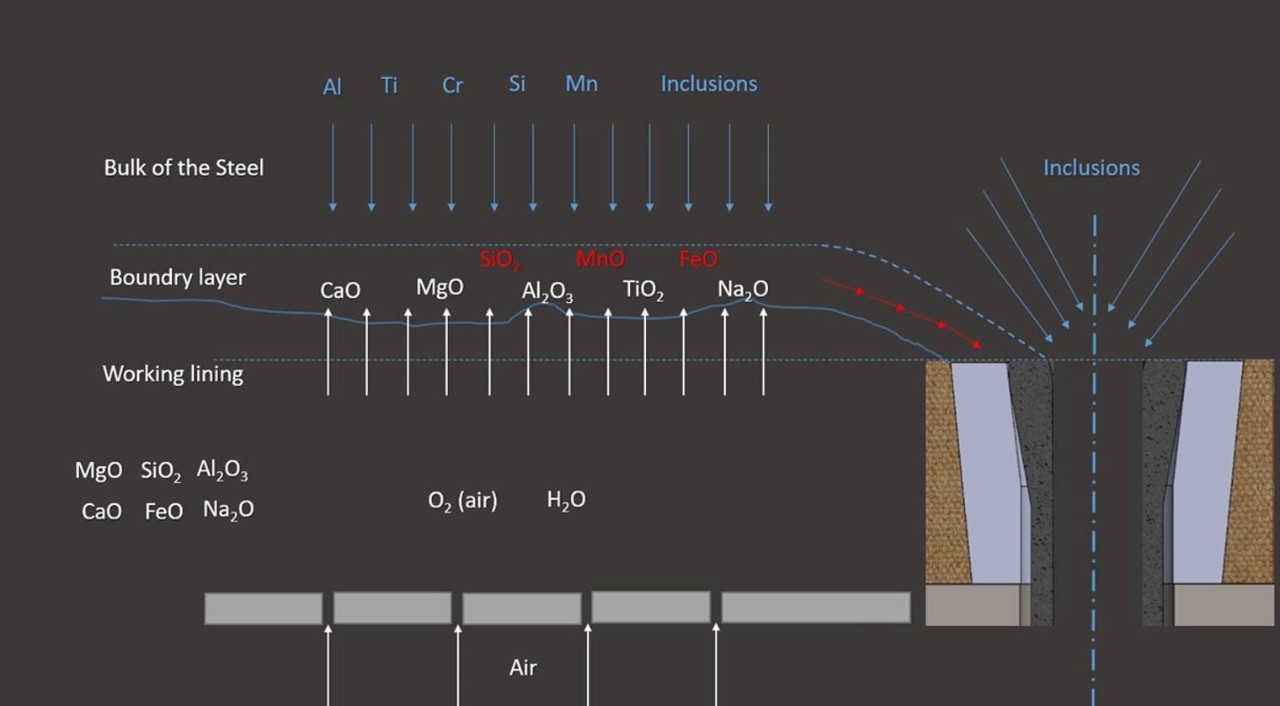
Entrainment of reoxidation species into the outlet
- During steady state casting a boundary layer is formed along the floor of the tundish
- Air ingress through the permeable tundish lining creates reoxidationwithin the boundary layer leading to generating of undesirable non-metallic inclusions
- During ladle change or draining the boundary layer and reoxidation species are entrained to the tundish outlet resulting in build-up in the flow channel below
Siphoning effect by stopper
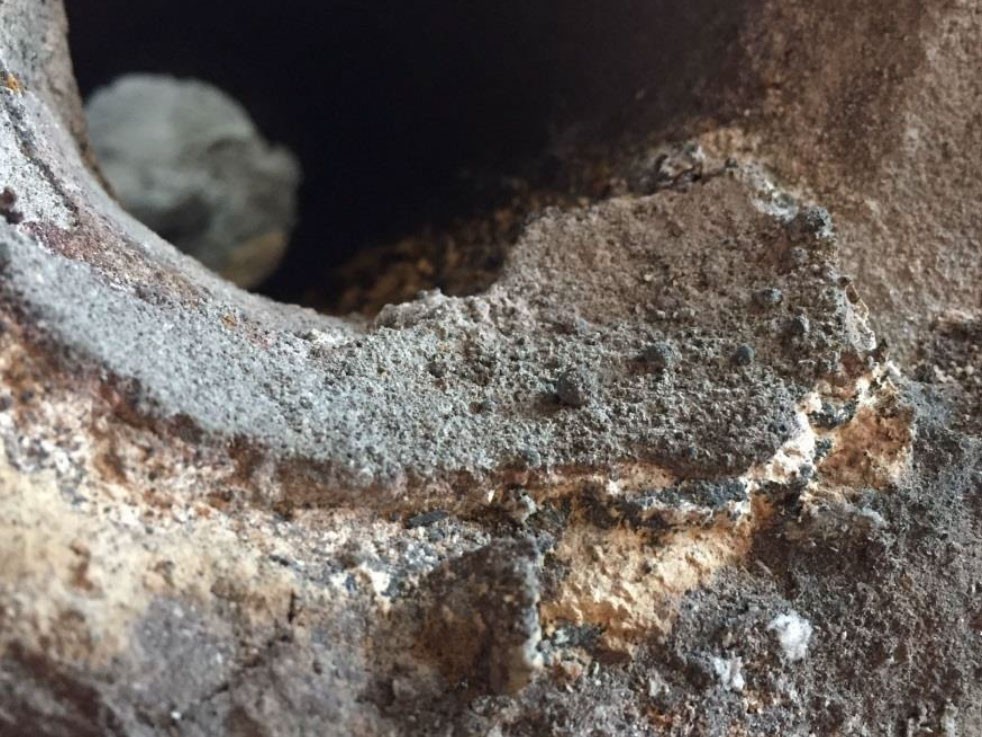
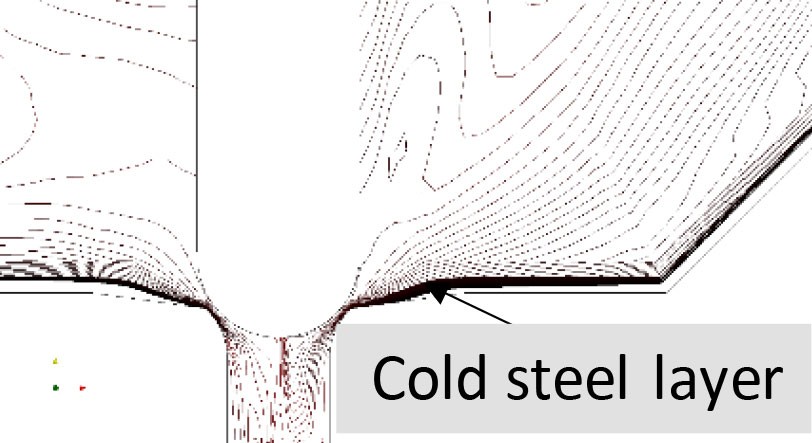
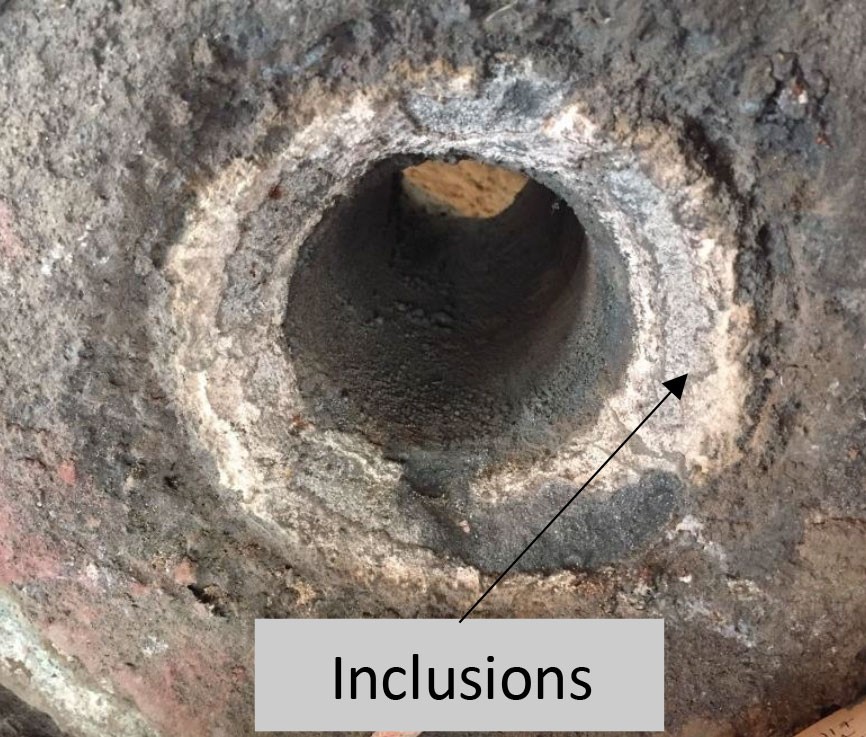
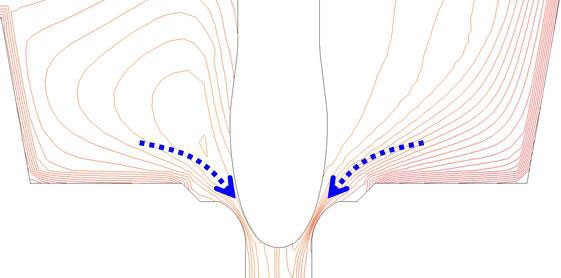
with ATOM
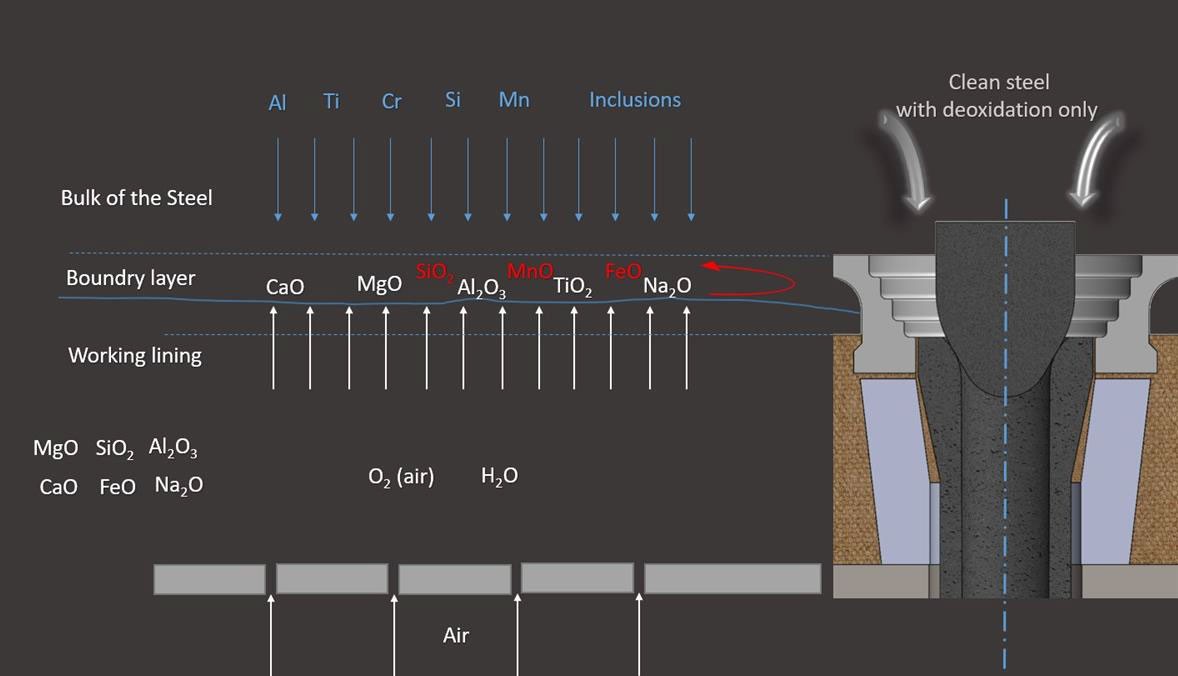
ATOM blocking the reoxidation species at the tundish outlet
ATOM provides a physical boundary to contain the reoxidzed boundary layer (during unsteady state events such as ladle change or end of sequence drain
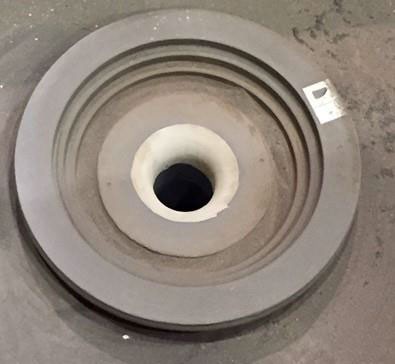
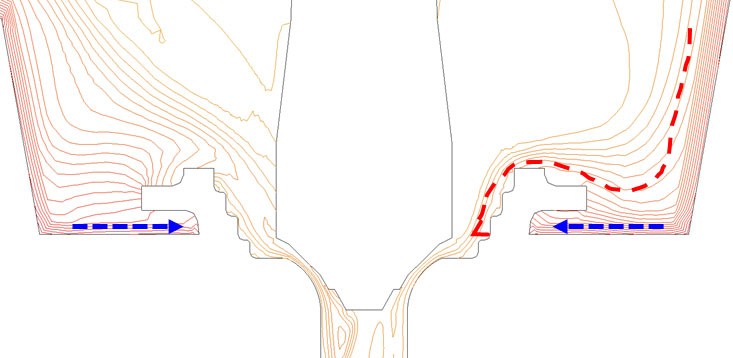
- Traps cold steel along the floor
- Changes the angle flow entering the outlet in order to pull in the more homogeneous bulk flow
- Increases average outlet temperature by 1 °C
Tundish Stopper Rod Application
Description of Water Model Experiment

- A dyed saline solution is used to simulate the cold, reoxidized boundary layer on the floor of the tundish
- 7 ml of the solution is injected during steady state
- A colorimeter is installed in the tundish outlet to quantify the amount of dye exiting the tundish
- Ladle change and tundish drain tests are then preformed
Entrainment of Cold Steel During Ladle Change - Comparison
Baseline
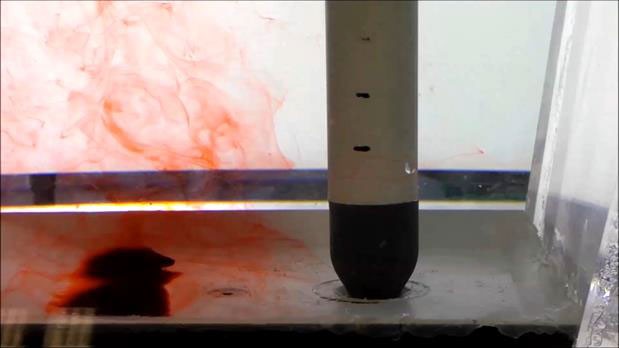
ATOM
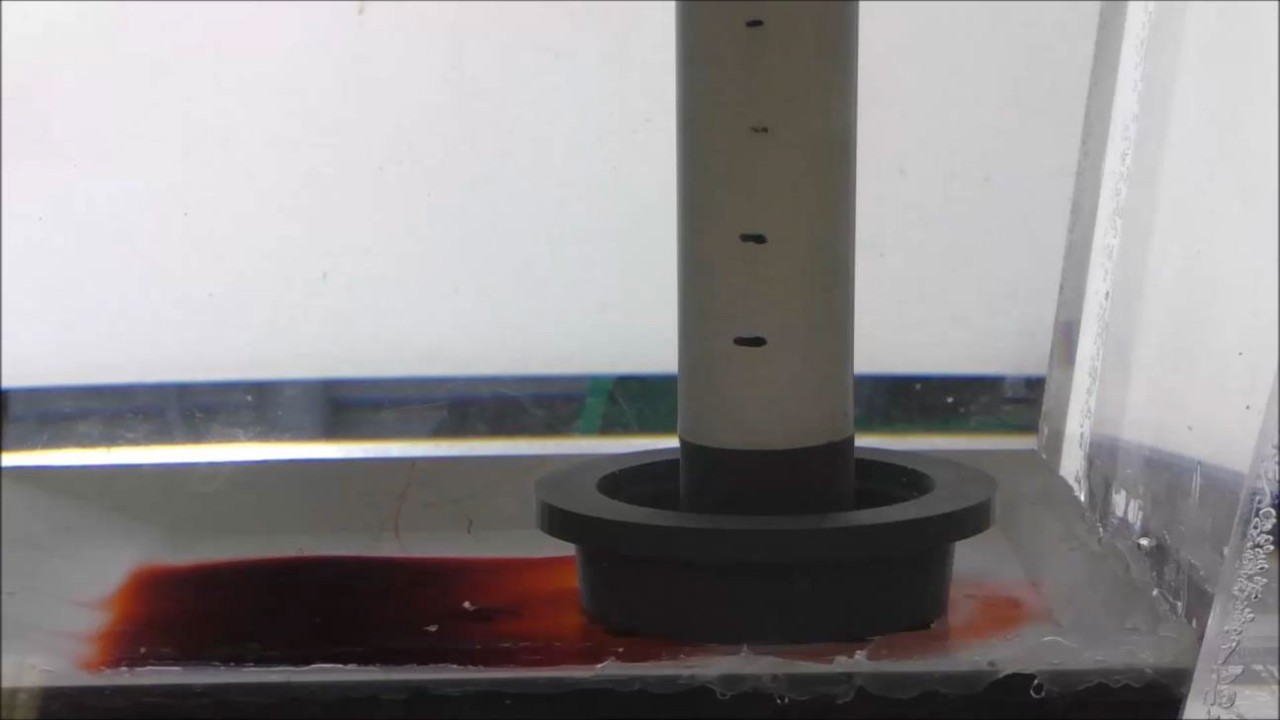
Video speed x 8
- Without ATOM the bulk of the saline solution simulating the boundary layer is entrained to the outlet
- With ATOM the boundary layer remains undisturbed, the reoxidzied steel and non-metallics are not entrained to the outlet
Entrainment of Cold Steel During Ladle Change - Comparison
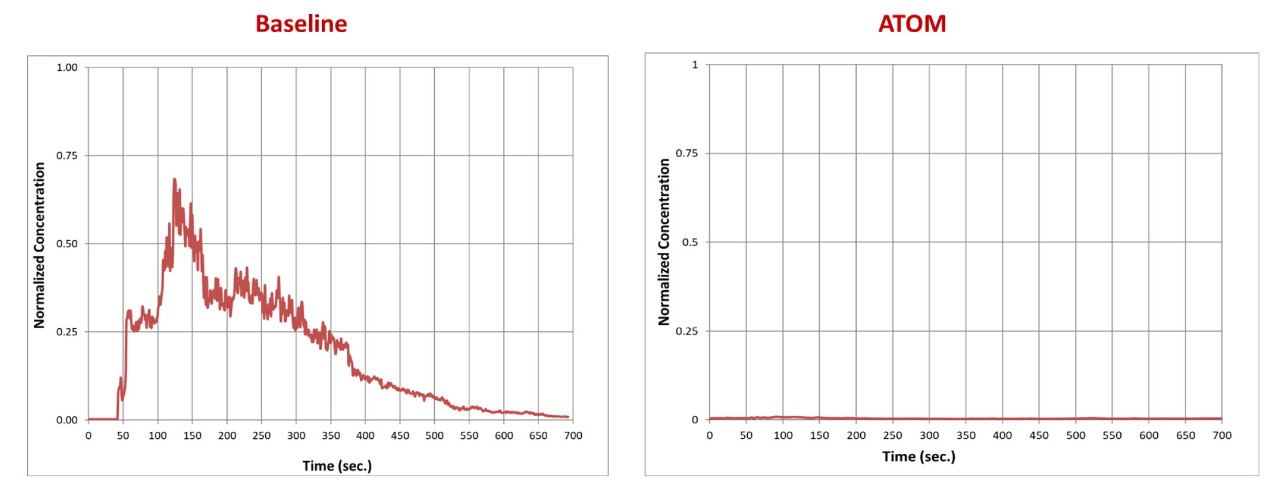
Draining Comparison
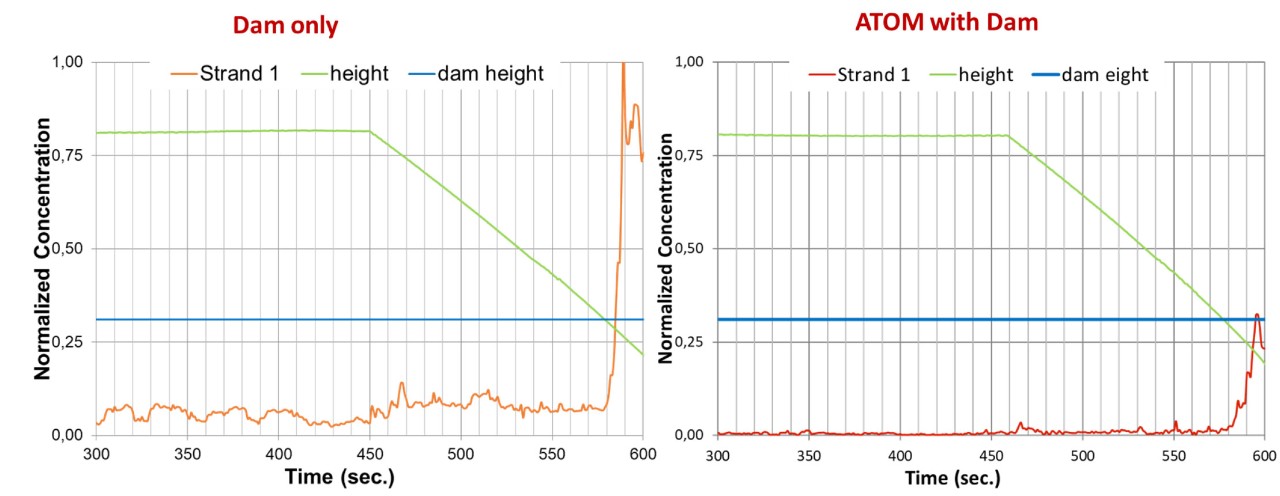
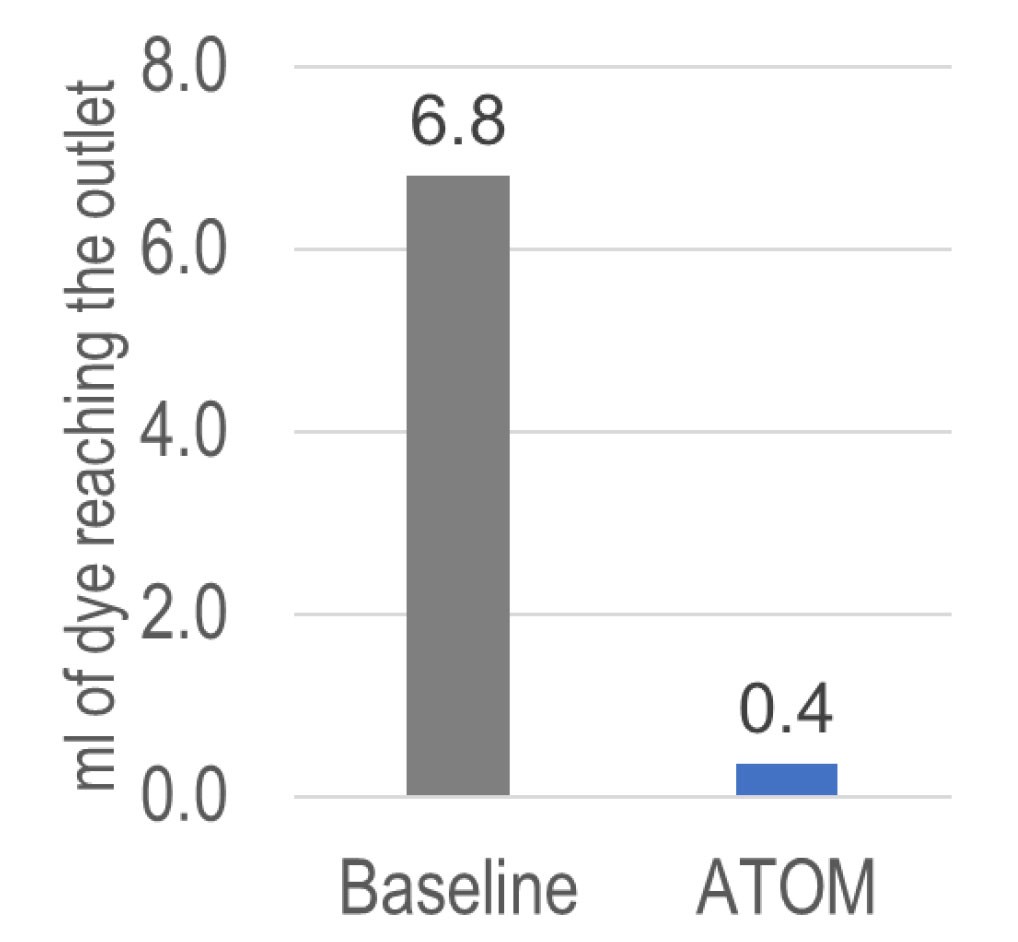
- A colorimeter installed in the outlet of the tundish water model provides a record of the dye exiting the tundish
- During ladle change the ATOM virtually eliminates entrainment of the simulated boundary layer
- During tundish drain the ATOM allows for a lower drain level with reduced entrainment of the reoxidized boundary layer

